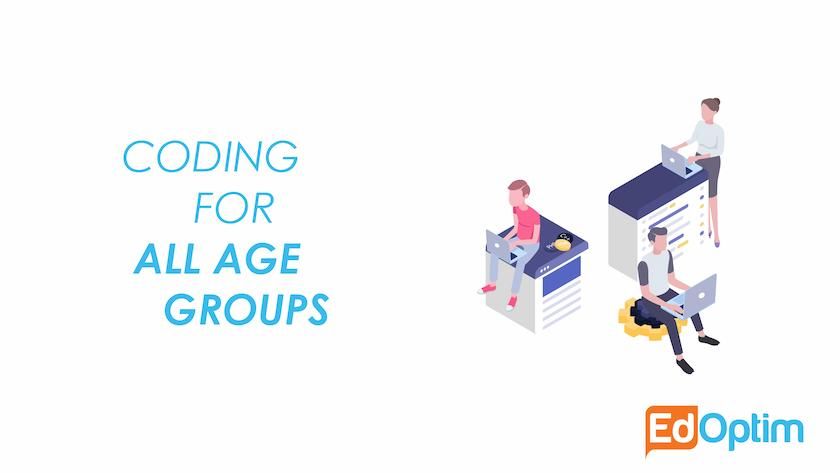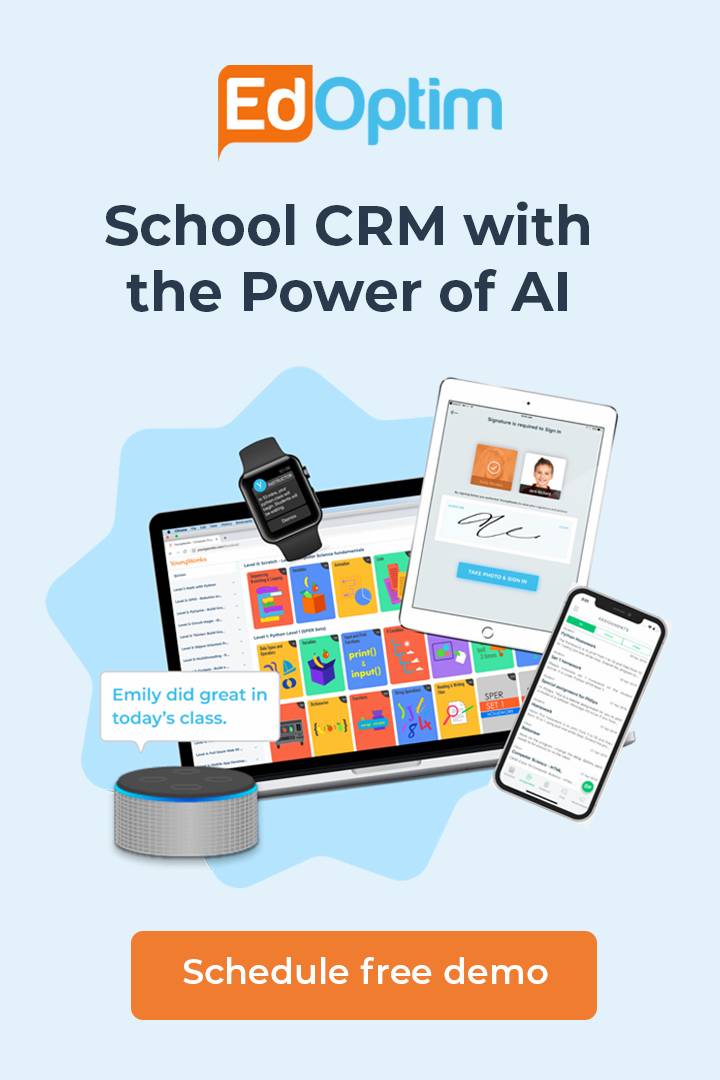Dec 09, 2024 By Team EdOptim *
In a world increasingly shaped by technology, coding is becoming an essential skill for children of all ages. It fosters problem-solving skills, logical thinking, and critical thinking skills while opening doors to future career opportunities. But the journey into computer programming should be adapted to each child's learning style and abilities, with age-appropriate tools and coding platforms that make the process engaging and effective. Tailoring coding education for different age groups is the best approach to support every child’s unique coding journey and help them build valuable skills for the digital world.
Here’s a breakdown of coding experiences tailored to different age groups, from young children just starting out with block-based coding to teenagers exploring text-based coding and advanced programming concepts.
Coding for Young Children (Ages 5-7)
For young children, coding starts with visual programming platforms that use drag-and-drop code blocks rather than text-based commands. At this stage, the goal is to create a hands-on learning experience that introduces basic programming in a fun, accessible way. Tools like ScratchJr and Code.org are perfect for young learners, allowing them to create interactive stories, simple animations, and even coding games.
Through these coding activities, young minds develop early problem-solving skills and gain a fundamental understanding of computational thinking. They learn how to sequence actions and see the immediate results of their work, which fosters creativity and builds confidence in their abilities.
- Learning Focus: Creativity, problem-solving, understanding sequences
- Recommended Tools: ScratchJr, Code.org, Tynker
- Activities: Creating animations, simple games, interactive stories
Elementary-Aged Coders (Ages 8-12)
By the time children reach the ages of 8 to 12, they are ready for more advanced coding concepts. This age group benefits from block-based coding languages like Scratch, which introduces programming fundamentals through coding challenges and engaging projects. Created by MIT, Scratch allows kids to design their own games, animations, and interactive projects using intuitive drag-and-drop code blocks.
Additionally, robotics platforms like LEGO Mindstorms and mBot allow children to combine coding with physical components. This hands-on approach is great for young learners who enjoy interactive projects and want to see their code come to life in the real world. These activities deepen children’s understanding of coding fundamentals like loops, conditionals, and debugging, setting a strong foundation for future learning.
- Learning Focus: Problem-solving, debugging, loops, and conditionals
- Recommended Tools: Scratch, LEGO Mindstorms, mBot, Tynker, Minecraft Education Edition
- Activities: Game development, robotics projects, interactive animations
Tweens and Teens (Ages 13-17)
By the time students are in their teenage years, they’re ready to dive into text-based coding and explore coding languages that are used in real-world applications. Python and JavaScript are excellent programming languages for this age group, offering a balance between simplicity and versatility. Teens can also learn about web development with HTML and CSS, or try their hand at game development with Unity and Minecraft.
As they tackle coding projects that include developing websites, mobile apps, or basic artificial intelligence applications, teenagers are learning the building blocks of computer science. This is also a good time to introduce algorithms and coding courses that cover syntax, debugging, and structured problem-solving. By engaging in real-world coding challenges and exploring projects that match their interests, teens build essential coding skills and gain a meaningful coding experience that can set them up for college or careers in tech.
- Learning Focus: Syntax, advanced problem-solving, computational thinking, real-world applications
- Recommended Tools: Python, JavaScript, HTML, CSS, Unity
- Activities: Building websites, game development, app development, coding tutorials
Young Adults (Ages 18+)
For young adults and high school graduates, coding can move into specialized areas, with students often focusing on advanced topics like data science, AI, app development, and full-stack web development. This stage involves learning more sophisticated programming concepts and developing coding skills in languages like Python, Java, and C++. Coding platforms such as GitHub allow students to collaborate on open-source projects, enhancing both their coding experience and teamwork abilities.
Advanced coding lessons now cover concepts like algorithms, data structures, and software engineering principles, preparing students for careers in computer science and other tech-related fields. These coding programs help students refine their skills, tackle real-world coding challenges, and prepare for future studies or professional roles.
- Learning Focus: Advanced algorithms, collaborative coding, career-focused projects
- Recommended Tools: GitHub, advanced Python libraries, Codecademy, Coursera
- Activities: Data science projects, building AI models, web and app development
Why Age-Appropriate Coding Education Matters
Coding is about more than just learning commands and syntax; it’s about developing a way of thinking that benefits children for life. By introducing coding lessons that are tailored to each age group, we help young coders build problem-solving skills in a supportive learning environment. Every stage of learning, from visual programming in ScratchJr to the best coding tools for high school students, is a stepping stone on their coding journey.
As children grow, they develop a deeper understanding of coding concepts, strengthen their logical thinking, and gain coding experience in a variety of coding languages. Whether they go on to become programmers, engineers, or simply confident users of technology, the skills they gain from coding are applicable in every part of life. By giving them the right tools and guidance, we’re helping them prepare for a bright future in our increasingly digital world.
Supporting Kids of All Ages in Their Coding Journey
Teaching coding to children from a young age is an investment in skills that will last a lifetime. Each stage in the coding journey, from years old to high school and beyond, requires an approach that builds on earlier knowledge through step-by-step learning. Online platforms offer online coding classes tailored to each age group, enabling children to learn at their own pace in a flexible, supportive learning environment.
In these online coding classes, kids can work on coding activities that allow them to design and build their own games. This hands-on experience not only solidifies core coding concepts but also empowers children with creative control over their projects, sparking a love for learning coding and giving them a true sense of accomplishment.
By teaching coding in a way that meets each child where they are in their learning journey, we can ensure that children of all ages have the tools they need to succeed. As they build projects, solve problems, and create interactive experiences, kids gain confidence and a solid foundation in computer programming that will benefit them for years to come.
Why YoungWonks is the Ideal Choice for Coding Education
Youngwonks offers personalized coding education tailored to each child’s unique learning style and developmental stage. With programs designed for kids as young as 5 years old to advanced courses for teenagers, Youngwonks provides a structured learning path that combines fun, creativity, and skill-building.
Our expert instructors, state-of-the-art tools, and engaging curriculum ensure that every child gets the most out of their coding journey. Whether your child is just beginning with block-based coding or advancing to text-based programming, youngwonks is here to guide them every step of the way.
*Contributors: Written by Reuben Johns ; Edited by Riya Kumari Singh; Lead image by Shivendra Singh

